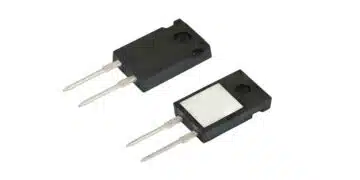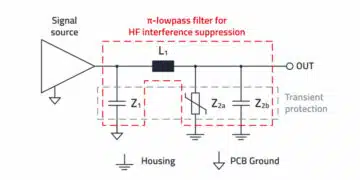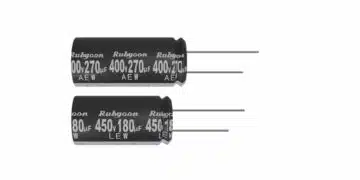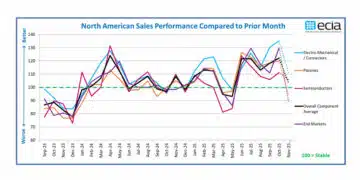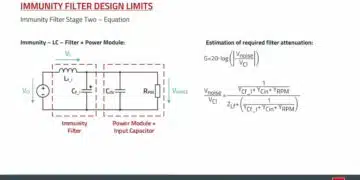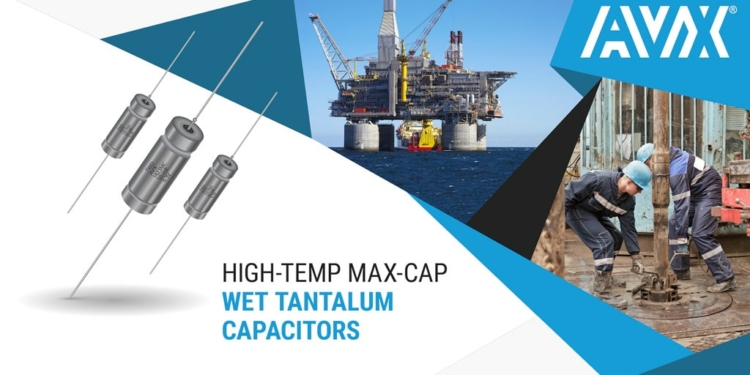Source: Globe Newswire news
The newly improved HTMC Series provides the highest DC capacitance & the highest operating temperature of any T4-case capacitor on the market, plus exceptional electrical & mechanical stability for extended lifetimes of up to 10,000 hours.
AVX Corporation, a leading manufacturer and supplier of advanced electronic components and interconnect, sensor, control, and antenna solutions, has increased the maximum operating temperature for its TWD High-Temp Max-Cap (HTMC) Series axial leaded, hermetically sealed wet tantalum capacitors from 125°C to 175°C.
Based on a well-established wet tantalum design, the newly improved TWD HTMC Series capacitors provide the highest DC capacitance and the highest operating temperature of any T4-case capacitor available on the market. Currently available in two ratings, 50mF/6.3V and 25mF/10V, the series achieves high capacitance values previously only offered by supercapacitors and delivers exceptional electrical and mechanical stability for extended lifetimes of up to 10,000 hours at +105°C and rated voltage and, for the 25mF/10V rating, up to 2,000 hours at +175°C and derated voltage.
Ideal applications for TWD HTMC Series capacitors now extend to high-temperature oil and gas market applications, including down-hole drilling equipment, that require proven high-reliability performance at temperatures in excess of 125°C. The series is also well suited for use in DC hold-up and low frequency pulse circuitry in avionics, defense, specialized industrial, and other high-reliability applications that require high capacitance at higher temperatures and for longer lifetimes than electric double-layer capacitor (EDLC) supercapacitor technologies can currently deliver.
“Made using high-quality tantalum powders and established designs, our field-proven HTMC Series hermetically sealed wet tantalum capacitors deliver exceptional electrical and mechanical performance and long-lifetime durability in a range of high-temperature, high-reliability applications that now extends to the oil and gas industry,” said Mitch Weaver, member of the technical staff, AVX.
TWD HTMC Series capacitors are now rated for operating temperatures extending from -55°C to 175°C and are available in two ratings: 50mF/6.3V and 25mF/10V, with a ±10% and ±20% capacitance tolerance, in a single case size: DSCC size T4/AVX size “E”, with or without an insulating sleeve, and with either Sn/Pb (60/40) plated or pure matte tin terminations. The cases measure 26.97mm (+0.79mm or -0.41mm) in length, 10.31mm in diameter with an insulating sleeve or 9.52mm (±0.41mm) in diameter without, and have 57.15mm (±6.35mm) terminals. The capacitors are also RoHS compliant, lead-free compatible, and suitable for use with automatic mounting and soldering processes. Lead-time for the series is 12 weeks.
For more information about AVX’s newly improved TWD High-Temp Max-Cap (HTMC) Series wet tantalum capacitors, please visit http://www.avx.com/products/tantalum/wet-tantalum/dcultramax/.


